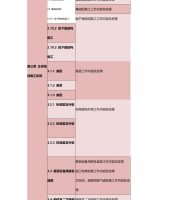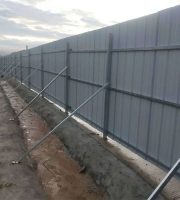Plastering gypsum is a kind of material for plastering the surface of building interior wall and roof
.
It is a replacement product of traditional cement mortar
.
It is an air hard plastering material made of building gypsum as the base material, supplemented by optimized performance materials and a variety of admixtures and aggregates
.
As a new type of internal wall plastering material, plastering gypsum has the characteristics of light weight, fire prevention, heat insulation, sound absorption, high strength, non shrinkage, not easy to crack and convenient construction, which has been widely recognized and vigorously promoted in the market
.
The plastering gypsum is firmly bonded with the base, which can avoid the hollowing, cracking, falling off and other phenomena of cement mortar plastering
.
The plastering gypsum is especially suitable for the plastering of aerated concrete walls
.
1
.
Plastering gypsum has the following advantages: (1) it has strong adhesion and good water retention due to the addition of a variety of polymers
.
Plastering gypsum can bond well with almost all kinds of wall base materials, especially for aerated concrete wall, so there is no need to brush any interface agent when plastering
.
Due to the micro expansion of plastering gypsum, it can effectively inhibit the shrinkage and cracking of plastering, and the wall plastering layer will not appear hollowing, cracking and falling off
.
(2) It has the function of decoration, plastering gypsum wall is compact and smooth, no dust, non-toxic, tasteless, no crack, high strength and no shrinkage, elegant appearance, reaching high-grade plastering effect
.
(3) Good flame retardant, plaster gypsum condensation, there is a lot of crystal water, in the event of fire, a large number of crystal water in gypsum released, the formation of steam to block the spread of the flame
.
At the same time, a lot of heat is absorbed in the whole dehydration process, which improves the fire resistance
.
(4) Good thermal insulation, plaster gypsum hardened body is a kind of porous material, thermal conductivity in the same thickness, is 30% of concrete products, 45% of clay brick
.
At the same time, after the plaster is solidified, the sound wave transmission can be effectively prevented, and the effect is good
.
(5) The plaster has good workability and water retention, and can be directly plastered on the wall after adding water and mixing evenly on site
.
It is easy to operate, low labor intensity and low material consumption
.
(6) The whole process of hardening and strength reaching the standard is only 1-2 days, and the construction period can be shortened by about 70% compared with the traditional cement mortar
.
(7) It has good respiratory function
.
During the hardening process of plastering gypsum, tiny honeycomb breathing holes can be formed, which can automatically absorb moisture when the indoor environment humidity is high
.
Under the opposite conditions, it can automatically release the reserved water, recycle repeatedly, control the indoor humidity within the appropriate range, and create a good and comfortable living environment for the residents
.
(8) it is conducive to winter construction
.
Plastering gypsum has the characteristics of early strength and quick setting, and its construction is not limited by seasons, especially in winter (- 5 ℃)
.
Its hydration speed does not slow down obviously due to low temperature
.
As long as the mixing water does not freeze, plastering can be done
.
It is a good material for indoor plastering construction in winter
.
2
.
Discussion on the application of desulfurized hemihydrate gypsum in plastering gypsum processing of desulfurized gypsum into hemihydrate gypsum, applied to plastering gypsum, there should be no problem in theory, but in practical application, there are unsatisfactory results
.
There is a desulfurization gypsum production enterprise with an annual output of 100000 tons of gypsum powder
.
In order to produce qualified plastering gypsum powder, last year, we invited experts in the industry to guide us and invested money in the equipment transformation of the calcination system
.
After nearly a year of debugging practice, the product quality still fails to meet the requirements
.
First, the initial setting time is short; second, the aqueous phase is high, and the characteristics are unstable, so it is difficult to adjust to plastering The production line can only shelve the indexes required by gypsum
.
Of course, some are the defects of desulfurization gypsum itself, some are the problems of calcination process, and some are the reasons for improper adjustment of process parameters
.
In the application, there are some problems, such as short setting time, unstable setting time, low strength and so on, which cause various difficulties in the construction, which is also one of the reasons for the difficulties in the application of desulfurization gypsum
.
According to our practical experience, this paper tries to discuss the above problems in the process of desulfurization gypsum, in order to communicate with peers in gypsum industry
.
(1) The initial setting time is short, it is difficult to prepare plastering gypsum, and the content of aqueous phase in desulfurization hemihydrate gypsum is high
.
Desulfurization dihydrate gypsum contains two water molecules
.
After calcination, 3 / 4 water molecules are removed, and 1 / 4 water molecules are left, so it is called hemihydrate gypsum
.
The product of hemihydrate gypsum often contains three phases, namely anhydrous phase, semi-aqueous phase and dihydrate phase
.
According to the industry standard, the proportion of each phase in the calcined hemihydrate gypsum is: semi-aqueous phase > 80%, anhydrous phase < 15% and dihydrate phase < 5%
.
According to the current calcination system, the proportion of phase components in different process systems is different, the same process system is the same, and the phase components produced by different manufacturers are also different, that is, the phase composition of hemihydrate gypsum produced by one manufacturer will also be different
.
Now according to my understanding of the situation, the current problems encountered by various manufacturers, mainly desulfurization hemihydrate gypsum in the two water phase is high, two water phase is high, the problem is that the initial setting time is short, that is to increase the retarder, also can not meet the requirements of plastering gypsum setting time, at the same time increase the retarder, increase the cost, reduce the strength, unable to prepare qualified plastering gypsum This is not only the difficulty of desulfurization gypsum processing, but also the difficulty of promoting the application of plaster gypsum
.
(2) The content of the two aqueous phases is unstable
.
The importance of the two aqueous phases was mentioned earlier
.
At present, there is another problem that is the instability of the two aqueous phases, which is also a key problem
.
There is a processing enterprise with two samples
.
Before adding the retarder, the initial setting time is about 16 minutes, and the strength is about 3.0
.
It should be suitable for plastering gypsum After adding the retarder, the initial setting time of one sample reached 160 minutes, and that of the other sample was only 26 minutes
.
The difference between the two samples was as much as five times
.
A construction company used this gypsum product as gypsum mortar
.
After arriving at the site, the workers could not operate, so they had to replace other high-quality gypsum
.
It can be seen that the importance of the two-phase water in hemihydrate gypsum, so this problem should be paid attention to by all desulfurization hemihydrate gypsum manufacturers
.
(3) The raw material with high strength of building gypsum is used to desulfurize the strength of hemihydrate gypsum
.
Hemihydrate gypsum in plastering gypsum is used as cementing material
.
In addition to gypsum, a large amount of sand is added
.
Generally, sand or other filling materials are added in the ratio of 1:3
.
The strength of gypsum plays a key role
.
The strength of gypsum is low, one is easy to be powdered on the surface, and the other is the low proportion of sand, such as If the strength of hemihydrate gypsum is above 3.5, the processed plastering gypsum can exceed the national plastering gypsum strength, and the proportion of sand can also be increased
.
We have a user who has passed the formula test and formulated with the ratio of 1:3, and the strength standard of the plastering gypsum can reach 2.6
.
Therefore, as a semi hydrated gypsum manufacturer, it should produce high strength products to meet the product standard of plastering gypsum
.
Manufacturers of plastering gypsum should purchase high-strength gypsum as raw materials, so as to provide qualified products and seize the market with quality
.
3
.
There are two main parameters for the raw materials of plastering gypsum
.
One is that the initial setting time should be more than 10 minutes, and the other is that the dihydrate phase in hemihydrate gypsum is less than 4%
.
Generally speaking, the initial setting time of building gypsum calcined at high temperature is faster than that calcined at low temperature
.
The key is the level of the two-phase water in the gypsum after low-temperature calcination, which becomes the key to the quality of gypsum.
.


